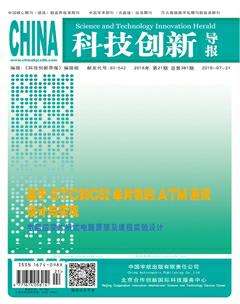结合实地观测和STEREOHI图像观测分析
刘四清+王晶晶+陈艳红
摘 要:基于单颗STEREO卫星日球层成像仪(Heliospheric Imager,HI)图像的固定Φ角拟合法(Fixed-Φ,FΦ)和调和均值拟合法(Harmonic-mean,HM),结合STEREO和ACE卫星的太阳风实地观测数据,深入分析了2010年15个日冕物质抛射(CME)事件,对比讨论了这两种方法在提取CME参数如太阳赤道平面的主传播方向、传播速度的效果,其中FΦ拟合法假设CME是固定方向传播的小质点,HM拟合法假设CME为具有球形前沿的通量绳结构,结果发现:(1)使用HM拟合法分析得到的CME主传播方向与太阳-实地观测点的夹角平均值是9.5°,小于FΦ拟合法的19.7°;(2)HM拟合法分析的预计到达时间与实测ICME起始时间的平均误差和最大误差分别为0.282 d和0.805 d,明显小于FΦ拟合法。该文也使用结合STEREO两颗卫星HI图像的直接三角法(Direct-triangulation,DT)和球面切线法(Tangent-to-a-sphere,TS),深入分析了5个朝向地球的CME事件,其中,DT和FΦ拟合法的假设相同,TS和HM拟合法的假设相同,结果发现:(1)这两种方法分析的CME主传播方向与日地连线的夹角最大值分别是13.2°和21.1°,明显小于单颗卫星观测的20.7°和27.5°;(2)其中4个CME事件使用方法得到的线性拟合加速度不超过0.4 m/s2,这说明CME在主传播方向上的速度变化在1 AU内不超过100 km/s;(3)使用TS方法得到的预计到达时间与实测ICME起始时间的绝对误差最小,平均值和最大值分别是2.3 hr和5.8 hr。可见,利用HI图像提取CME传播参数时,加入CME前沿结构假设和结合多角度观测都能够有效地减小拟合误差。
关键词:日冕物质抛射 STEREO HI
Abstract:Characteristic parameters of 15 CMEs in 2010, such as direction of propagation and transit speed in Solar equatorial plane, were analyzed by Fixed-Φ(FΦ) and Harmonic-mean(HM) approximation based on Heliospheric Imager (HI) observations from one spacecraft, combined with in-situ observations of solar wind on STEREO and ACE. CME was modeled as a small element with a fixed direction of propagation in FΦ approximation. HM approximation assumed CME could be modeled as a flux-rope, whose circular front anchored at the Sun and center propagated on a fixed direction of propagation. We found that: (1)Average value of separation angle between CME propagation direction and Sun-spacecraft line obtained by FΦ and HM approximation was 19.7° and 9.5°, respectively. (2)Average and maximum of differences between predicted arrival time and in-situ ICME start time was 0.282 and 0.805 day, respectively. Characteristic parameters of 5 CMEs which propagated toward the Earth were analyzed by Direct-triangulation (DT) and Tangent-to-a-sphere (TS) method based on HI observations from both STEREO spacecraft. DT and TS method could be done under the same assumption of FΦ and HM approximation, respectively. We found that: (1)Maximum value of separation angle between CME propagation direction and Sun-Earth line by these two methods was 13.2° and 21.1°, respectively, which was less than that obtained from one spacecraft significantly. (2)Linear accelerations and transit speed change obtained by TS method of 4 CMEs was no more than 0.4 m/s2 and 100 km/s, respectively. (3)Average and maximum of differences between in-situ ICME start time and predicted arrival time obtained by TS method was 2.3 hr and 5.8 hr, respectively, which was less than that obtained from other methods. In summary, differences between CME characteristic parameters obtained from HI observations and in-situ observations could be effectively reduced by modeling CME as a flux rope as well as combining with multi-point HI observations.
Key Words:CME; STEREO; HI
阅读全文链接(需实名注册):http://www.nstrs.cn/xiangxiBG.aspx?id=32662&flag=1

